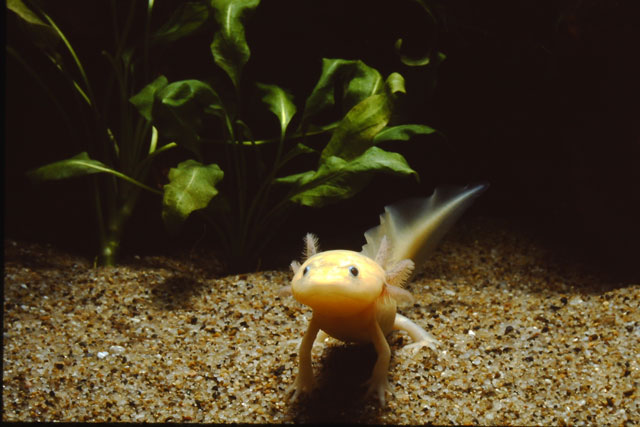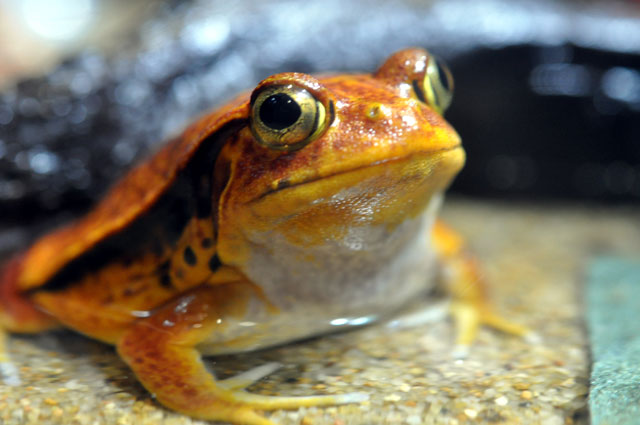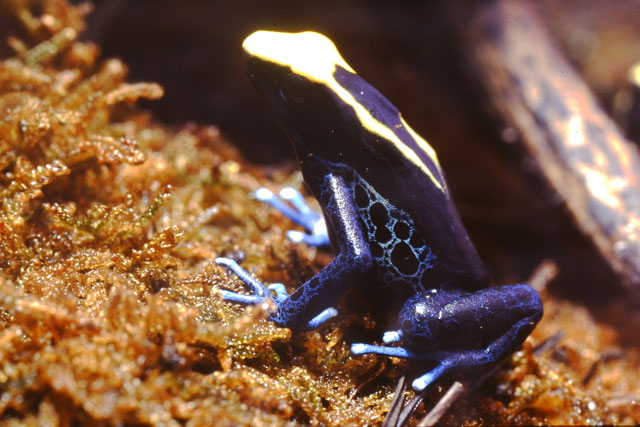From water to land: the world of amphibians
<<back | next>>
A long time ago, some fish came onto land and evolved into amphibians. They changed from breathing through gills to breathing through lungs, and from fins to limbs, but they could not completely leave the water. You can see the various ecology of amphibians, such as frogs, newts, and salamanders, near water.
"From Water to Land" Aquarium Creatures

Mexican salamander Distribution: Mexico It is also called the axolotl. As salamanders grow, their external gills are absorbed and they switch to breathing through lungs, but Mexican salamanders do not absorb them and continue to breathe through gills even when they become adults. This form is called neoteny (larval maturation).

Rusty Tomato Frog Distribution: Eastern Madagascar It is nocturnal and active at night. When it is about to be attacked by an enemy, it will defend itself by stretching out its limbs and inflating its body.

Dendrobates tinctorius
Distribution: Brazil, Guyana, French Guiana, Suriname Even within the same species, there are many differences in body patterns.
The jewel of the rainforest: the poison dart frog
Poison dart frogs are small frogs that live in the tropical rainforests of Central and South America, and are known as the "jewels of the tropical rainforest" for their beautiful body colors. They come in vibrant reds, yellows, and blues, and have a striking presence. There is a secret behind these body colors. Poison dart frogs have a highly poisonous skin, so their flashy body colors are a warning to those around them that they are poisonous.
The local Indians used to hunt using this powerful poison. The poison was named after the poison dart frog, which was used to coat the tips of arrows used in hunting. Today, the poisonous components of the poison are being studied, and it is also used in the medical field.
<<back | next>>
